- info@sintaductrodder.com
- +86 158 3195 8550

Sometimes if you want to replace or connect an electrical wire, the only course you can use is to loop it through an electrical conduit. But this is hardly as simple as utterly pushing a cable. There are methods and specific devices you will require to use.
Based on the conduit's length, how thick it is, and how many hooks and nooks are in it; you have four available methods of pulling new wire through the conduit.
Examine your conduit from the imminent end to the remote end to define its length. While the conduit is more significant than the fish tape, and if you can able to handle it with an existing wire in the conduit as a pull chain, you'll be blown with implicitly no other choice but to apply this pull tape process to bring the wire through the conduit.
To use an existing pull wire, firstly be assured that the wire is free and detached at the end of the conduit adjacent to you. Grab your box of cable to the remote end of the conduit. Where, if the pull wire is attached to anything, you will want to free it. Create a loop petty enough that it will quickly fit into the conduit, then tighten the loop by binding the free end to the wire coast with tape.
Support the head of the wire into the loop you created in the pull wire. Produce a ring in the provisions cable the equal size as the one in the pull wire. Guard the end with tape as you achieved with the pull wire. Place your box of wire so that it will smoothly leave the box and will penetrate freely into the conduit. Jump to the opposite point of the conduit and draw on the pull wire till the fresh cable has evolved out of the end of the conduit.
If the cable you're pulling jams up, you will want to use wire lubricant to it and engage a helper. Return to the remote end of the conduit. Pull back the cable till you can recognize the loops you created. Use wire lubricant to the wire surface. Direct your supporter to pull the cable toward him until he notices the loops in the cable. While he pulls, you append lubricant. Your supporter may have to use a cable puller when the cable becomes tricky and challenging to hold.
If the pull wire collapses as it has been pulled through the conduit, and if the conduit is more extended than your fish tape, then the fish take would not go through the conduit. You will require to inject your fish tape into the conduit and drive it until the end arrives at the other end of the conduit. Connect your cable to the fish tape loop as you did with the pull wire. Return to the other end of the conduit and pull your fish tape through the conduit.
Using Cable rollers - Cable rollers are applied to leveling the method of connecting and managing cables. Cable rollers are employed to hold the cable from the ground so that operators and pulley systems can pull them without pretending their performance.
Using Duct Rodder - Duct rodder is also known as fiberglass conduit rodder, is an outstanding cable pulling devices. Smooth and flexible surface provides the piercer readily move through the linear pipeline. The duct rod is formed from ejected fiberglass and huge power resin for elasticity and tensile force. The outer layer is coated with high-density UV-resistant polyethylene, which defends and covers while slipping on the surface.
 Duct Rodder
Duct rodder, it is an excellent cable pulling tool. Smooth and resilient surface allows the piercer easily pass through the narrow pipeline. Commonly used in telecommunication pipeline cleaning.
Duct Rodder
Duct rodder, it is an excellent cable pulling tool. Smooth and resilient surface allows the piercer easily pass through the narrow pipeline. Commonly used in telecommunication pipeline cleaning.
 Fiberglass Duct Rodder
Fiberglass duct rodder, It is an auxiliary tool for cable laying in pipelines, and can collect cables conveniently. It is ideal for electrical wire pulling works.
Fiberglass Duct Rodder
Fiberglass duct rodder, It is an auxiliary tool for cable laying in pipelines, and can collect cables conveniently. It is ideal for electrical wire pulling works.
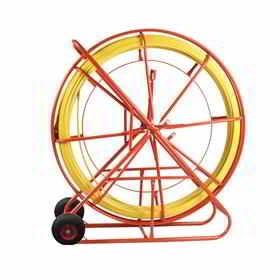 Cobra duct rod
Cobra duct rod is also named cobra conduit rod. It is widely used in various kinds of electric cable pulling pipe line project
Cobra duct rod
Cobra duct rod is also named cobra conduit rod. It is widely used in various kinds of electric cable pulling pipe line project
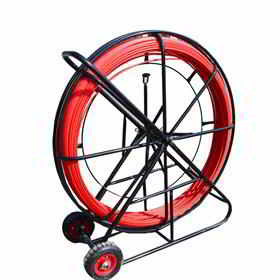 Traceable duct rodder
Traceable duct rodder is a unique type duct rodder with cooper wire inside, which can allow users follow and find the duct rod's route easily.
Traceable duct rodder
Traceable duct rodder is a unique type duct rodder with cooper wire inside, which can allow users follow and find the duct rod's route easily.
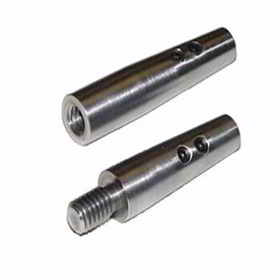 Duct Rodder Accessories
Duct rodder repairt kit of duct rodder includes 5 pcs accessories, drawing head, rod grapple, flexible leader, roller guide, and swivel coupling. The accessories make the cable running easy and simple.
Duct Rodder Accessories
Duct rodder repairt kit of duct rodder includes 5 pcs accessories, drawing head, rod grapple, flexible leader, roller guide, and swivel coupling. The accessories make the cable running easy and simple.
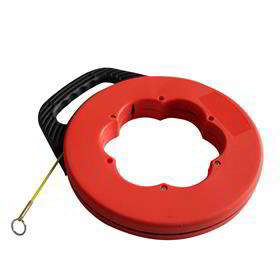 Fish Tape
Fish tape is an ideal tool widely used by an electrician to route through electrical conduit or walls for wires pulling.
Fish Tape
Fish tape is an ideal tool widely used by an electrician to route through electrical conduit or walls for wires pulling.
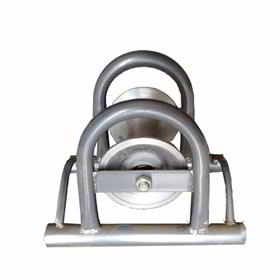 Cable Rollers
Cable rollers are widely used to protect cable from damaged in the field of construction during the cable-laying.
Cable Rollers
Cable rollers are widely used to protect cable from damaged in the field of construction during the cable-laying.
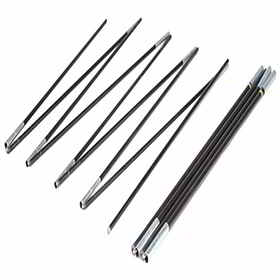 Push Pull Rod
Fiberglass push pull rod is a tooll used for pushing or pulling the wire, cable easily through pipeline or crawl spaces etc. It is widely used in construction, residential electrical and commercial industries. It is excellent for hard to reach places
Push Pull Rod
Fiberglass push pull rod is a tooll used for pushing or pulling the wire, cable easily through pipeline or crawl spaces etc. It is widely used in construction, residential electrical and commercial industries. It is excellent for hard to reach places
Main Products
Tell Me What by wechat
